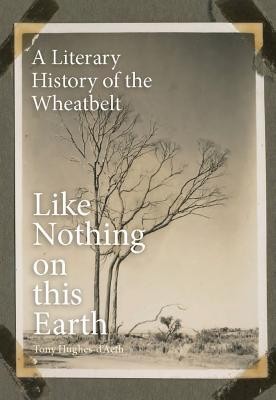
- We will send in 10–14 business days.
- Author: Tony Hughes-D'Aeth
- Publisher: University of Western Australia Press
- Year: 2017
- Pages: 608
- ISBN-10: 1742589243
- ISBN-13: 9781742589244
- Format: 15.6 x 23.4 x 3.4 cm, minkšti viršeliai
- Language: English
- SAVE -10% with code: EXTRA
Reviews
Description
During the twentieth century, the southwestern corner of Australia was cleared for intensive agriculture. In the space of several decades, an arc from Esperance to Geraldton-an area of land larger than England-was cleared of native flora for the farming of grain and livestock. Today, satellite maps show a sharp line ringing Perth. Inside that line, tan-colored land is the most visible sign from space of human impact on the planet. Where once there was a vast mosaic of scrub and forest, there is now the Western Australian wheatbelt. Tony Hughes-d'Aeth examines the creation of the wheatbelt through its creative writing. Some of Australia's most well-known and significant writers-Albert Facey, Peter Cowan, Dorothy Hewett, Jack Davis, Elizabeth Jolley, and John Kinsella-wrote about their experience of the wheatbelt. Each gives insight into the human and environmental effects of this massive-scale agriculture. Albert Facey records the hardship and poverty of small-time selection in Australia. Dorothy Hewett makes the wheatbelt visible as an ecological tragedy. Jack Davis shows us an Aboriginal experience of the wheatbelt. Through examining these writings, Tony Hughes-d'Aeth demonstrates the deep value of literature in understanding the human experience of geographical change. [Subject: Non-Fiction, Environmental Studies, Agricultural Studies, Literary Criticism]
EXTRA 10 % discount with code: EXTRA
The promotion ends in 22d.12:42:11
The discount code is valid when purchasing from 10 €. Discounts do not stack.
- Author: Tony Hughes-D'Aeth
- Publisher: University of Western Australia Press
- Year: 2017
- Pages: 608
- ISBN-10: 1742589243
- ISBN-13: 9781742589244
- Format: 15.6 x 23.4 x 3.4 cm, minkšti viršeliai
- Language: English English
During the twentieth century, the southwestern corner of Australia was cleared for intensive agriculture. In the space of several decades, an arc from Esperance to Geraldton-an area of land larger than England-was cleared of native flora for the farming of grain and livestock. Today, satellite maps show a sharp line ringing Perth. Inside that line, tan-colored land is the most visible sign from space of human impact on the planet. Where once there was a vast mosaic of scrub and forest, there is now the Western Australian wheatbelt. Tony Hughes-d'Aeth examines the creation of the wheatbelt through its creative writing. Some of Australia's most well-known and significant writers-Albert Facey, Peter Cowan, Dorothy Hewett, Jack Davis, Elizabeth Jolley, and John Kinsella-wrote about their experience of the wheatbelt. Each gives insight into the human and environmental effects of this massive-scale agriculture. Albert Facey records the hardship and poverty of small-time selection in Australia. Dorothy Hewett makes the wheatbelt visible as an ecological tragedy. Jack Davis shows us an Aboriginal experience of the wheatbelt. Through examining these writings, Tony Hughes-d'Aeth demonstrates the deep value of literature in understanding the human experience of geographical change. [Subject: Non-Fiction, Environmental Studies, Agricultural Studies, Literary Criticism]


Reviews